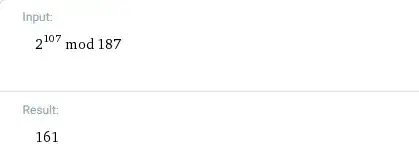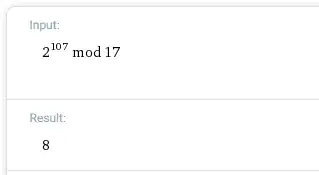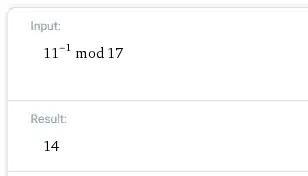This post is mainly concerned about
$$2^{107} \pmod {187} \equiv 161$$
being quickly or immediately solvable. Far from being my problem, I took it as an exercise in applying, as slowly as possible, the CRT after my own post yesterday on the topic. The intermediate results are verified with WolframAlpha to focus on the important points.
Unfortunately something is incorrect in my application, and sorting it out can help shed some additional light on the CRT and related theorems.
Following @lulu's tip, i.e. $187=11\times 17:$
$2^{107}\equiv 7 \pmod{11}$ since applying Euler's theorem,
$2^{\phi(11)}=2^{10}\equiv 1 \pmod{11}.$ Therefore,
$2^{107}\pmod{11}=\left(2^{10}\right)^{10}\cdot 2^7\pmod{11}\equiv2^7\pmod{11}\equiv \color{red}7\pmod {11}.$
And
$2^{107}\equiv 8 \pmod{17}$ since applying Euler's theorem,
$2^{\phi(17)}=2^{16}\equiv 1 \pmod{17}.$ Therefore,
$2^{107}\pmod{17}=\left(2^{16}\right)^{6}\cdot 2^{11}\pmod{17}\equiv2^7\pmod{11}\equiv \color{blue} 8\pmod {17}.$
Applying now the formula of the CRT:
$$x\equiv a_1 b_1 \frac{M}{m_1}+a_2 b_2 \frac{M}{m_2}\pmod M$$
first by calculating
$b_1 = (187/11)^{-1}\pmod{11}\equiv\color{red}2\mod{11}$
and
$b_2=(187/17)^{-1}\pmod{17}\equiv\color{blue}{14}\mod{11}$
it would seem that
$2^{107}\pmod{187}=\color{red}7\cdot \color{red}2\cdot17 + \color{blue}8\cdot\color{blue}{14} \cdot11\equiv1470 \pmod{187}$
which is not the expected 161.
Where have I missapplied the CRT?




